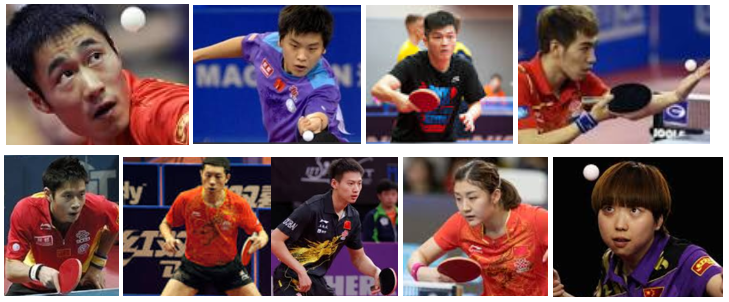How are Hurricane 2, Hurricane 3, NEO Hurricane 3, Hurricane 8 and Hurricane 3-50 different?
-Hurricane 2 was developed in 2000 after Wang Liqin and Yan Sen won the gold medal in Olympics men’s doubles. It creates high speed and spin whilst maintaining stable control. In addition, it generates strong near-table offensive power to make the ball fly in a low arc which frustrates opponent’s defences.
-Hurricane 3 is designed for players who mainly adopt a controlled playing style or have a relatively weak attack. The rubber can add strength and produce a long arc, which increases the ball control and exerts fast attack and loop drive close-to-table.
-NEO rubbers were designed for the era of inorganic glue. It creates a stable and high-speed arc and improves the scoring ability of the players. NEO Hurricane 3 has a high speed, low fast loop, changeful arc and stronger spin.
-Hurricane 8 is a new generation of sticky-speed rubber. Hurricane 8 is specially designed to enhance the spin and speed for 40+ Celluloid-Free T.T. balls. It keeps a good balance between flexibility and elasticity.
-Hurricane 3-50 is made of tacky rubber with elastic sponge. The sponge is receptive to ball contact while the rubber friction grips and holds the ball. Such a combination provides the player with great ball feeling with every shot and suits players who want to exert a fast, stable loop attack.
(Information above is from DHS official website)
While unboosted Hurricane 3 can be hard and not bouncy, a nicely boosted Hurricane 3 can have incredible hand feeling, low throw and great control. However, it’s too much of a hassle for many people.
Neo Hurricane 3 is a bit like boosted H3. It has good spin, control and power but you still need to boost it to maintain the performance after the boosting effect goes off.
Personally, I prefer Hurricane 8. It is friendly to beginners who want to switch from European/Japanese rubbers to Chinese rubbers as it has good elasticity and flexibility. In a way, it does not require the best strength but it trains you to use your own strength to improve the performance. It a tacky rubber with decent spin and speed. It might be less powerful than boosted Hurricane 3 but it’s good enough to use for beginner / intermediate level players. Most importantly, you don’t have to boost it throughout!
(Information above is just personal opinion. Feel free to discuss/comment)


